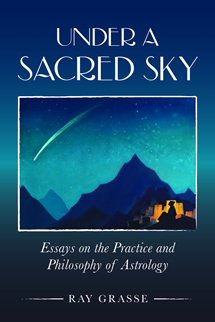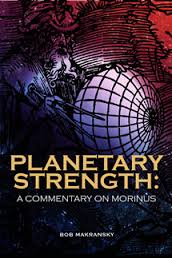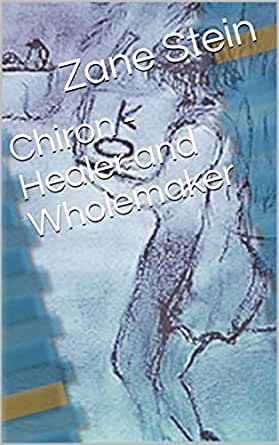Even astrology too has had tribal tendencies, whereby people talk to people in their own “bubble”, those with similar perspectives who use similar techniques. Yet many astrologers have written books that have gone beyond convention into new areas of astrological possibility. For over a decade I have reviewed many of these books and I feel fortunate to have encountered them.
Like any author, after I had written a book, I was eager to read reviews of my book. Some were quite interesting and helpful to me, but I also read some in which I was not sure the reviewer got far into the book, or much past the back cover and table of contents. As a lifelong fan of reading book reviews with substance (see, for example, The New York Review of Books), I endeavored to review astrology books with the same seriousness as the authors had when writing it.
The result so far has been eleven years dialogue on the foundations, scope, and application of astrology throughout the centuries and today. There has also been much about astrological technique and application. Although accentuating the positive, I have not been shy about disagreeing with the author – or else where is the dialogue? Recently taken to re-reading many of them to better understand my own development in astrology.
In chronological order of the reviews (links will take you to the full reviews):
‘Moving Forward, Looking Back ‘ NCGR Research Journal, Summer, 2010. (ed. Brennan, C., Mann, A.T.) Reviewed January 2011.
Here’s a book that a some of everything – overviews of branches of ancient astrology, the medieval tradition, and several strands of modern astrology, including use of statistical methods. This is also a chance to hear from many voices within today’s astrology world. Due to the brevity of the articles, many only hint at the cultural background and possibilities of these traditions moving forward. Issues involved are our ability to trace traditions accurately and our abilities to continue those that disappeared long ago. What are the roles of a surrounding culture? How do we assert validation for astrological methods from the past and those developed recently? One can skim through the book but it’s a different experience reading them all.
Definitions and Foundations. Vol. 2 of The Astrological Record of the Early Sages, by Robert Schmidt. Cumberland, MD: Golden Hind Press. (2009)
Reviewed September 2009
Looking at this review many years later is a sad experience. Not only did Schmidt leave us in late 1998, but this volume, with all its extravagance, promised decades worth of further scholarly and astrological investigation, by Mr. Schmidt and others. (This volume was originally conceived as Volume 2 of 30 projected volumes on the Hellenistic tradition.) Schmidt gets into the weeds about authorship of an original treatise by “Antiochus” and displays the difficulties in tracing conventions and continuities in ancient astrology. My procedural interests in this work were on the methods of translations and the difficulties reconciling English derivatives with original meanings, and the use of original word meanings to glean fundamental information about astrological concepts. My astrological interest was in his complex but enlightening discussion on aspect relationships in the astrological chart.

Astrology and the Authentic Self by Demetra George. (Ibis Press, 2008)
Reviewed November 2011
This is a valuable book for the practicing astrologer who desires to use traditional (ancient western) astrology within a modern context. Demetra George systematically demonstrates how traditional and modern astrology can be used side-by-side to help a client determine his or her greatest possibilities and show vulnerabilities. Here there are discussions on the ancient astrological literature and a presentation on assessing planetary strength and resourcefulness. Because her approach to interpretation is systematic, this book would be useful to the intermediate student who wants to incorporate her approach. How much is our astrological technique a result of what we have learned from others, dispassionate investigation, or something closer to artistic style?
(Here was a hiatus of a few years – I had my own book to write, Between Fortune and Providence)
Astrology and Cosmology in the World’s Religions by Nick Campion (New Your University Press, 2012)

Reviewed August 2014
What are the relationships between cosmology, spiritual order of the universe, and the astrology as we practice it today? Campion’s book takes us around the world and around the centuries, beginning with indigenous (oral transmission) cultures in Australia, Africa, North America, and the islands of the Pacific, to the ancient societies of Egypt, India, Mesopotamia, and Greece, to the contributions of the great monotheistic religions, concluding with the modern “New Age/Pagan” movement. Each tradition – whether Oceanic or Christian – is presented in its own chapter and gets about the same length of discussion. Campion’s book samples many scholarly traditions concerning these different cultures and is a good antidote for astrology’s typical Eurocentric and modern approach. This allows us to better see the role of astrology among other disciplines and its many interactions their surrounding cultures over the centuries and across the globe.
Under a Sacred Sky: Essays on the Practice and Philosophy of Astrology by Ray Grasse (Wessex Astrologer, 2015)

Reviewed September 2015
Sixteen articles include material on the philosophical implications of astrology, some of the practicalities of the consulting astrologer-client relationship, together with a lively dose of historical and mundane astrology. You will find much on outer planet symbolism in history and in daily life and on the Processional Ages. Most interesting is his article on astrology and the chakras. On the conceptual side, Grasse relates astrology to themes interconnectedness, synchronicity, and symbolism. Grasse is a card-carrying modern astrologer and he’s a worthy representative of this field.
Planetary Strength (2010) and Planetary Combination (2016) By Bob Makransky (Wessex Astrologer)

Reviewed October 2016
When Planetary Combination arrived in the mail, I quickly realized that I needed the first volume to place Makransky’s work in context. Both books are brief but full of information.
In these books Bob Makransky systematizes considerations of planetary strength and aspect. He looks at “celestial state”, “terrestrial state”, and “aspectual state” as indicators of planetary strength but they have different roles. Makransky turns around our standard use of keywords, replacing many worn-out ones (e.g. “intense”, “nurturing”) with others that are novel and challenging. In this way he creates his own kind of verbal algebra to discuss planets. Underlying his astrology is a view of human limitation and possibility — a stoic point of view, it seems — that bears serious consideration.
The Archetype of the Number and its Reflections in Contemporary Cosmology: Psychophysical Rhythmic Configurations by Alain Negre (Chiron Publications, 2018)
Reviewed October 2018

Alain Negre is a scientist by profession. His book is a visionary, imaginative, and audacious synthesis of ancient number theory and metaphysics, Jungian psychology, advanced modern cosmology, and the structure of astrology’s zodiac. (When I say “cosmology”, I mean the Big Bang and the subsequent formation of constellations, up to the dissolution of our cosmos.) His main astrological influence has been Dane Rudhyar but he goes far beyond Rudhyar.
If you are interested in birth chart interpretation, I suggest Demetra George or Bob Makransky – but not this. However, astrologers interested in a multi-disciplinary approach to astrology, or interested in very big ideas for their own sake, could find this book thought-provoking and a valuable resource. Of the books I have reviewed over the past eleven years, this is the densest and most daring.
Astrology and the Archetypal Power of Numbers by Joe Landwehr

Part I: A Contemporary Reformulation of Pythagorean Number Theory (Mountain View Press, 2010)
Part II: Arithmology in the Birthchart (Mountain View Press, 2018)
This is another example of my receiving a later volume of a series and quickly realizing that I must also review the preceding work. Both works are quite lengthy; to fully understand Part 1, he has another book that proceeds these.
You will also note the similarity in title between these books by Landwehr and Alain Negre’s above, but most resembles end there. (Their degrees of difficulty are similar.)
Joe Landwehr takes us back into chart interpretation and our normal astrological symbolism recast through the medium of the “Realms” of specific numbers, 0-10. Grounded in the tetractys, Landwehr combines number theory from late antiquity (“arithmology”) and stages of spiritual development and astrology and comes up with a complex and inventive depiction of astrology’s symbols and applications. Not a series for the faint-hearted or one without a great deal of spare time to learn a novel system, yet Landwehr may have opened a “realm” of astrology that look to the future more than the past.
(Landwehr responded to my review and I placed his comments at the bottom.)
Fixed Stars in the Chart: Constellations, Lunar Mansions, and Mythology by Oscar Hofman (Wessex Astrology, 2019)
Reviewed March 2020

Fixed stars are a favorite topic of mine and a daunting task for traditional and modern astrologers. Not only have we to account for precession but also traditions of worldly (and often dire) interpretations and a cosmological picture that places the “sphere” of the fixed stars beyond the planets and closer to divinity. In this provocative book, Hofman places himself in both dimensions.
If you have some background in traditional astrology and fixed stars, this book is well worth studying, especially if you apply mythic motifs to your astrological interpretation. His chapter on the Lunar Mansions opens up new possibilities for modern astrologers. Hofman’s work contains a great deal of useful information, has flashes of brilliance, yet also feels like an early stage of a developing process.
Chiron-Healer and Wholemaker by Zane Stein (2020)
Reviewed July 2020

Stein has studied Chiron, asteroids, and the Centaurs for several decades. In this work the author has given us an account of Chiron’s discovery, astronomy, psychology, mythology, the moving nodes of Chiron, and applications of Chiron in sign, house, and aspect. He has provided many example charts. He works within the contemporary framework of trauma theory and his work endeavors to apply this paradigm widely in his astrological interpretations. His book concludes with a compilation of articles he had previously written on the Centaurs.
Stein’s work is complex, sometimes difficult, but thought-provoking and brings up many important issues for the modern psychologically oriented astrologer. The beginner may find it overwhelming in detail but the astrologer who actively uses Chiron will find it a new source of information.


Pretty! This was an incredibly wonderful article. Thank you for supplying this information. Bobbye Sanson Earl